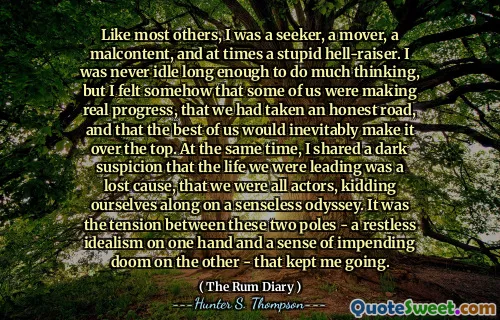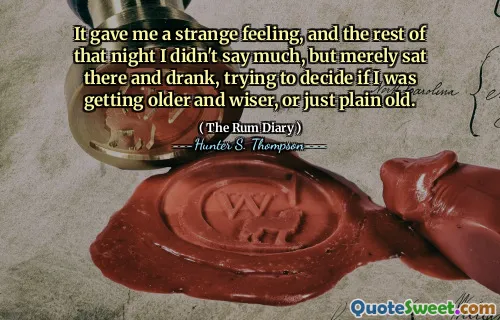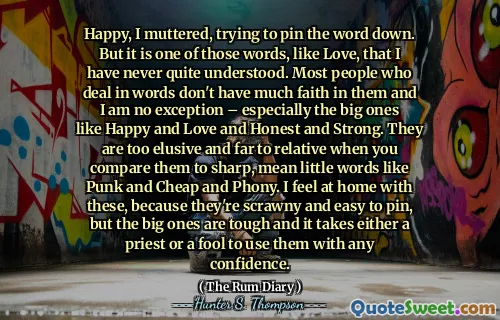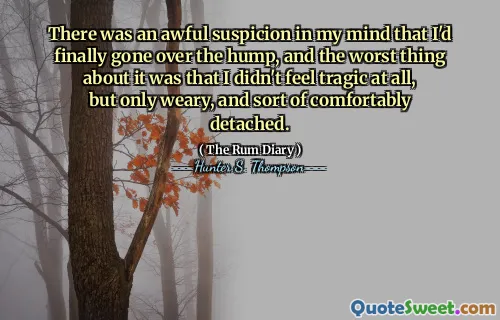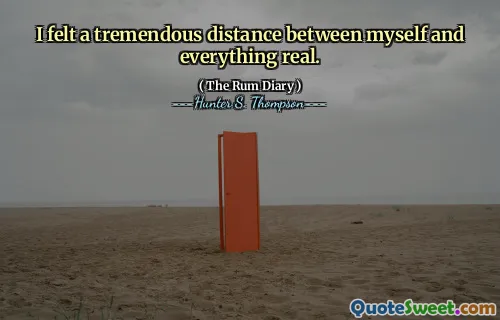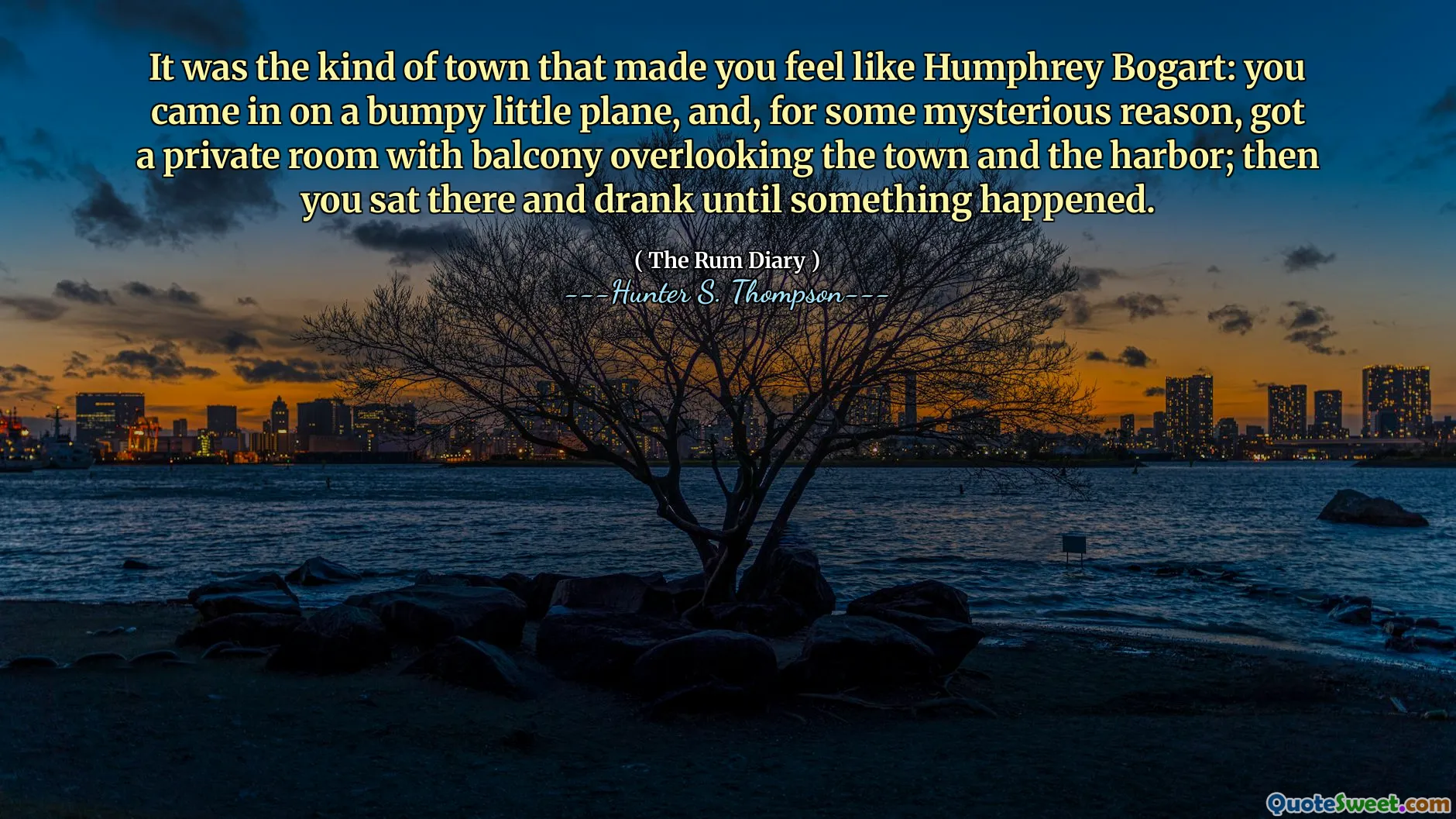
It was the kind of town that made you feel like Humphrey Bogart: you came in on a bumpy little plane, and, for some mysterious reason, got a private room with balcony overlooking the town and the harbor; then you sat there and drank until something happened.
The town depicted in Hunter S. Thompson's "The Rum Diary" evokes a sense of adventure and nostalgia, reminiscent of classic film noir. Arriving on a rugged plane, the protagonist finds himself in an unexpectedly luxurious situation, complete with a private balcony that offers stunning views of the vibrant town and harbor. This juxtaposition of roughness and elegance sets the tone for the story, inviting readers to explore the complexities of life in this locale.
As the narrator lounges in his room, the atmosphere is charged with anticipation, hinting at the promise of unexpected events that lie ahead. The act of drinking while waiting for something to unfold suggests a sense of leisure and perhaps escapism, capturing the essence of the sea-faring lifestyle and the unpredictable nature of the environment. This scenario serves as a microcosm of broader themes in the novel, where personal and social turmoil flourishes against a backdrop of exotic adventure.

